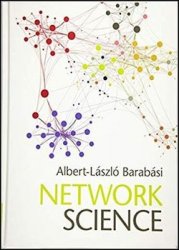 Название: Network Science
Название: Network Science Автор: Albert-Laszlo Barabasi
Издательство: Cambridge University Press
Год: 2016
Страниц: 912
Язык: английский
Формат: True PDF
Размер: 95.1 MB
Networks are everywhere, from the internet, to social networks, and the genetic networks that determine our biological existence. Illustrated throughout in full colour, this pioneering textbook, spanning a wide range of topics from physics to computer science, engineering, economics and the social sciences, introduces network science to an interdisciplinary audience. From the origins of the six degrees of separation to explaining why networks are robust to random failures, the author explores how viruses like Ebola and H1N1 spread, and why it is that our friends have more friends than we do. Using numerous real-world examples, this innovatively designed text includes clear delineation between undergraduate and graduate level material. The mathematical formulas and derivations are included within Advanced Topics sections, enabling use at a range of levels. Extensive online resources, including films and software for network analysis, make this a multifaceted companion for anyone with an interest in network science.
'Network Science introduces the reader to basic graph-theory notions, elements of data analysis, statistics, and some of the computational and modeling methods that allow us to interrogate network data sets. Throughout, the book illustrates those ideas with concrete and intuitive examples that also help achieve its main purpose, which is to instill network-based thinking in the reader. The writing is engaging, peppered throughout with stories, anecdotes, and historical connections ... Its discussion of the spread of disease in particular clearly illustrates the necessity of network thinking in solving a fundamental and practical problem that affects us all. The book is carefully structured and visually pleasing, with lots of colorful diagrams, figures, tables, and schematics to help convey fundamental concepts and ideas. Its pedagogical value is significantly enhanced by a Tufte-style exposition that recognizes and works with the nonlinear character of learning. The wide margins contain bits of information ... that expand on the main text.' - Zoltan Toroczkai, Physics Today
Скачать Network Science